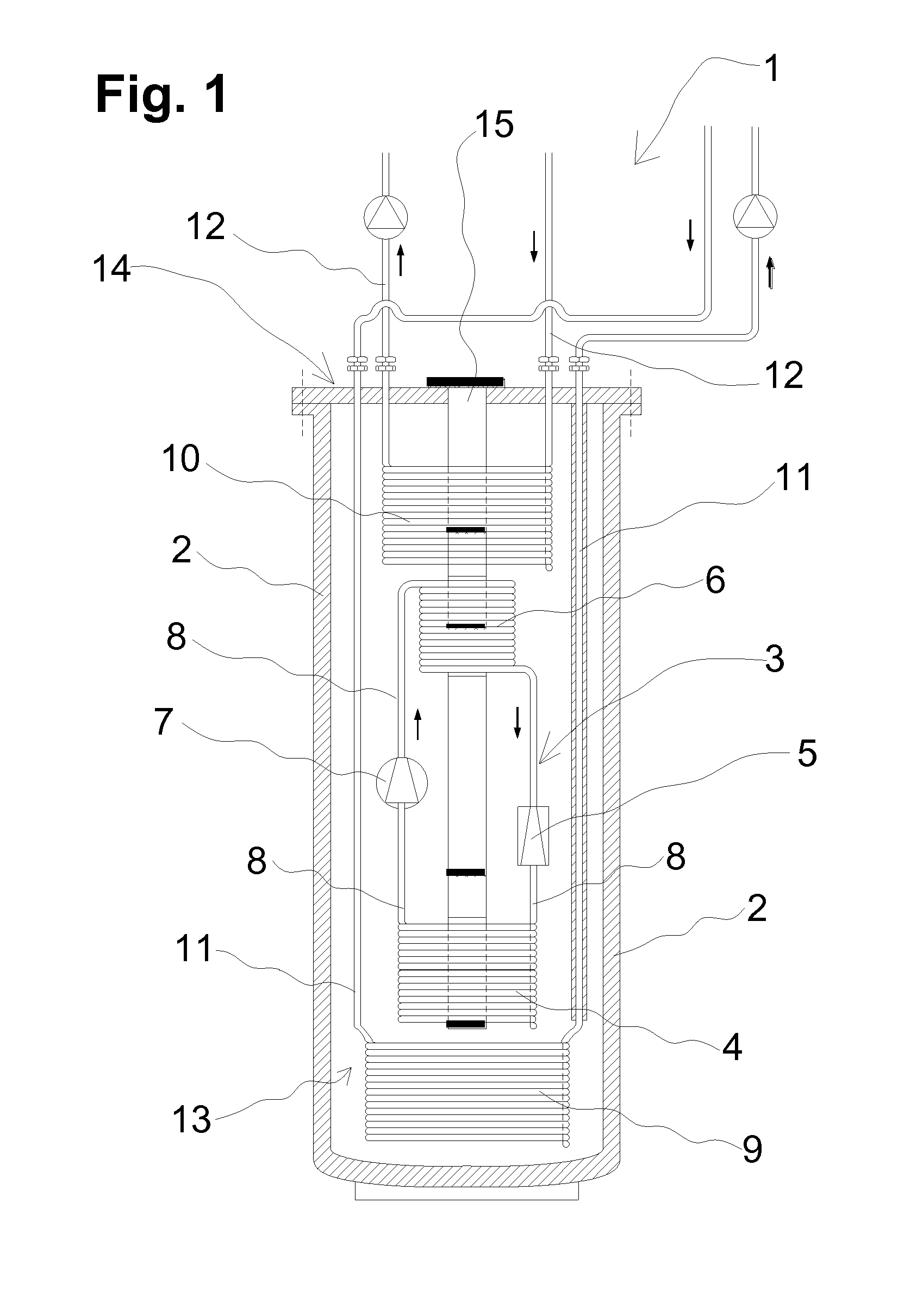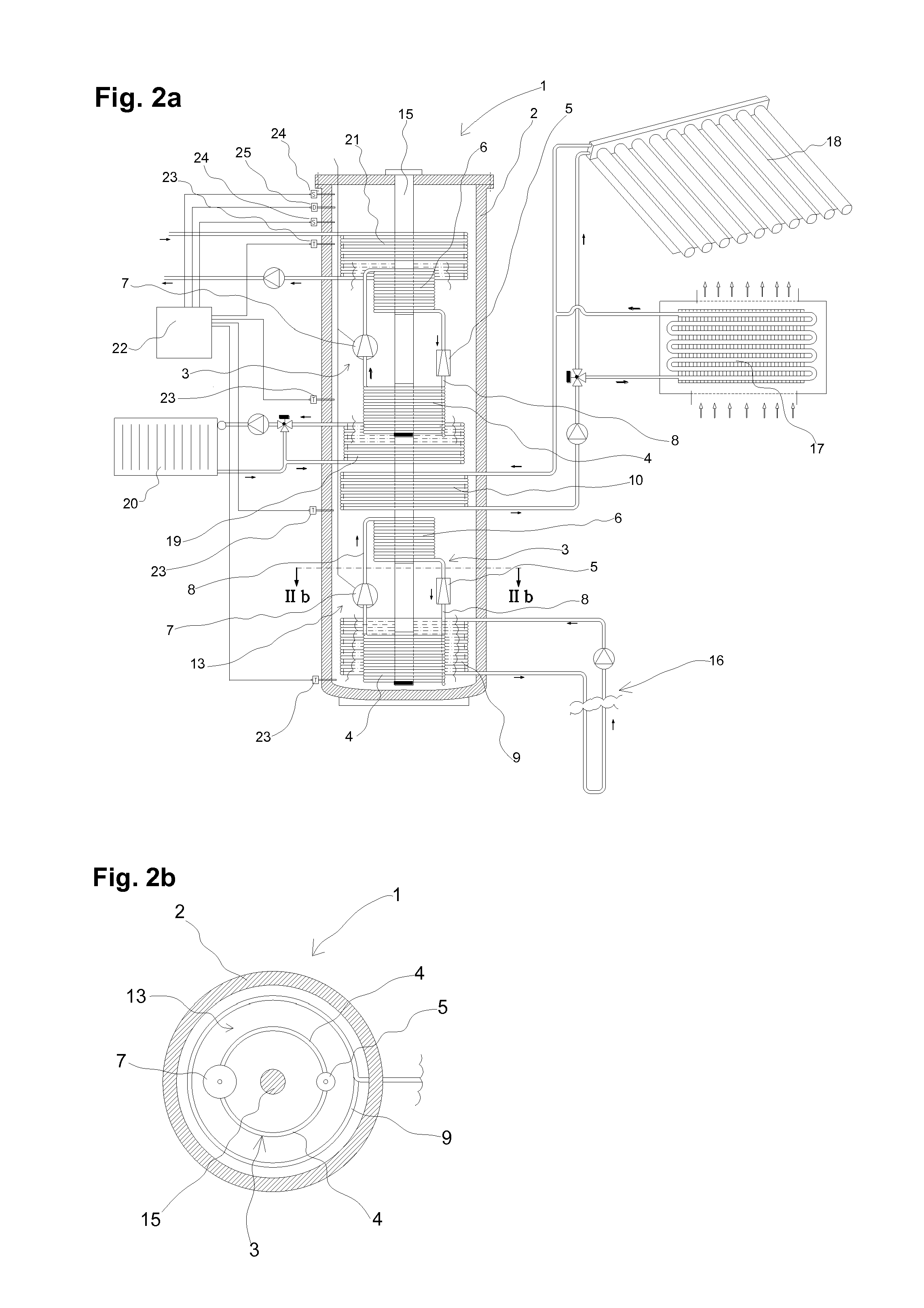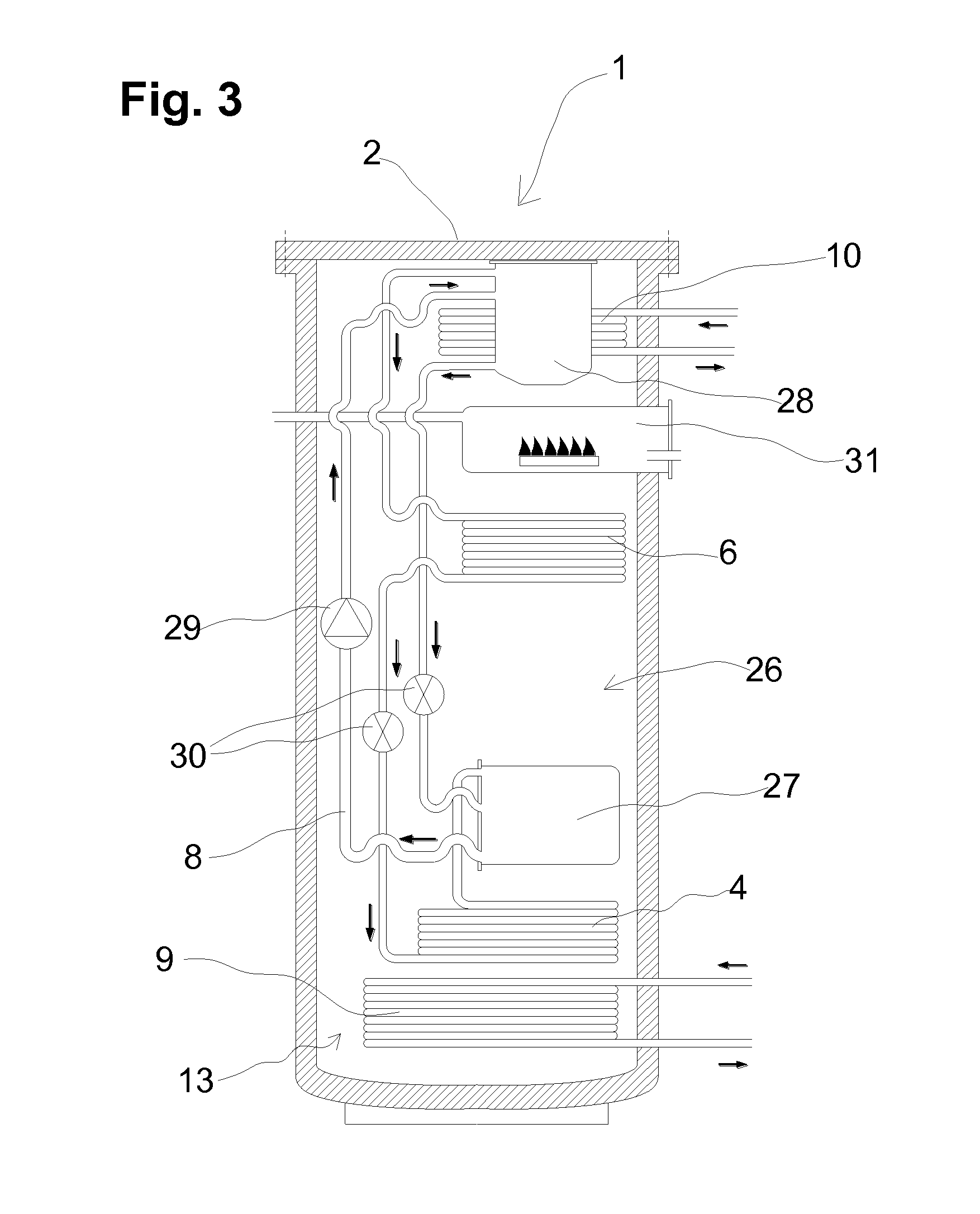This
radiation causes
cell damage, with adverse effects on living organisms and plants.
However, the technical application of such working substances is not easy.
Ammonia, for example, due to its
toxicity, cannot be used in devices operated in enclosed spaces.
Propane and
butane are extremely flammable, and the use of CO2 in the trans-critical region causes high pressures in the
refrigeration circuit.
For example, toxic
ammonia or flammable
butane or
propane can escape if there are leaks or damage to pipework or other components of cycle process plants or heat pumps.
Cycle process plants with larger amounts of these working substances are currently not operated in enclosed or inhabited buildings.
For example, CO2 is also toxic if it escapes into a cellar.
Concentrations of more than 8% in the air breathed are fatal.
In addition to the so-called “natural refrigerants”, the newly developed
fluorohydrocarbon-based working substances, e.g. HFO-1234yf, are also toxic and highly flammable.
These losses are essentially mechanical and thermal losses together with flow losses and losses in the working substance.
In practice, the design of such plants is very complex and error-prone.
Therefore, plants coupled in this way are offered extremely rarely.
Cycle process plants according to the current state of the art that are installed inside storage tank in this unusual way cannot function effectively without a whole series of modifications and additional
control parameters.
For example, in contrast to plants according to the prior art, there is the problem of overheating in passive operation as a heat store.
A temperature rise inside the storage device necessarily also causes
temperature and pressure increases in the components of the shut-down cycle process plant that carry working substance.
Depending on the working substance used, pressure increases can cause damage to materials.
1. Limitation of the storage device temperature even in passive operation, i.e. without using the cycle process plants. The
maximum temperature depends on the permissible operating pressures of the working substance in the components.
2. Coordinating all the working substances used with the reactants and binding agents used in the heat transfer medium at the same time. If two or more cycle process plants are used, these must be coordinated in such a way that even the simultaneous escape of different working substances in the event of damage can be managed chemically in a controlled way.
3. The coordination of two or more cycle process plants in the storage device takes place with the smallest possible temperature rise in the individual cycle process plants. E.g. by a stepwise temperature rise distributed across the cycle process plants involved, and the corresponding arrangement of heat exchangers to bring external heat into or out of storage in the storage device.
4. The combination of different kinds of cycle process plants requires
special design effort. For example, the combination of an electrically driven cycle process plant using
ammonia as the working substance and a
diffusion-
absorption heat pump using an
ammonia / water “refrigeration cycle”. Individual cycle process plants can be brought into operation selectively for different temperatures to be supplied by the
system. Advantageously, the characteristic diagrams of the individual refrigeration cycle processes are saved in a controller device according to an aspect of the invention for this purpose. Such an option enables the most favorable cycle process plant operating conditions to be used in each case. The choice of operation and of the duration of operation of the respective cycle process plant takes place depending on the required useful cooling or quantities of heat and their temperature. The temperature of the external heat exchangers and their
heat capacity is taken into account at the same time. The control of the respective device takes place according to the principle that the direct use of external heat or “cooling” from the external heat exchangers must take place before the cycle process plants are used. Thereafter, the cycle process plants are used stepwise or in a time-cycled manner to achieve the temperatures and amounts of heat required by the
system.
 Login to View More
Login to View More  Login to View More
Login to View More 


